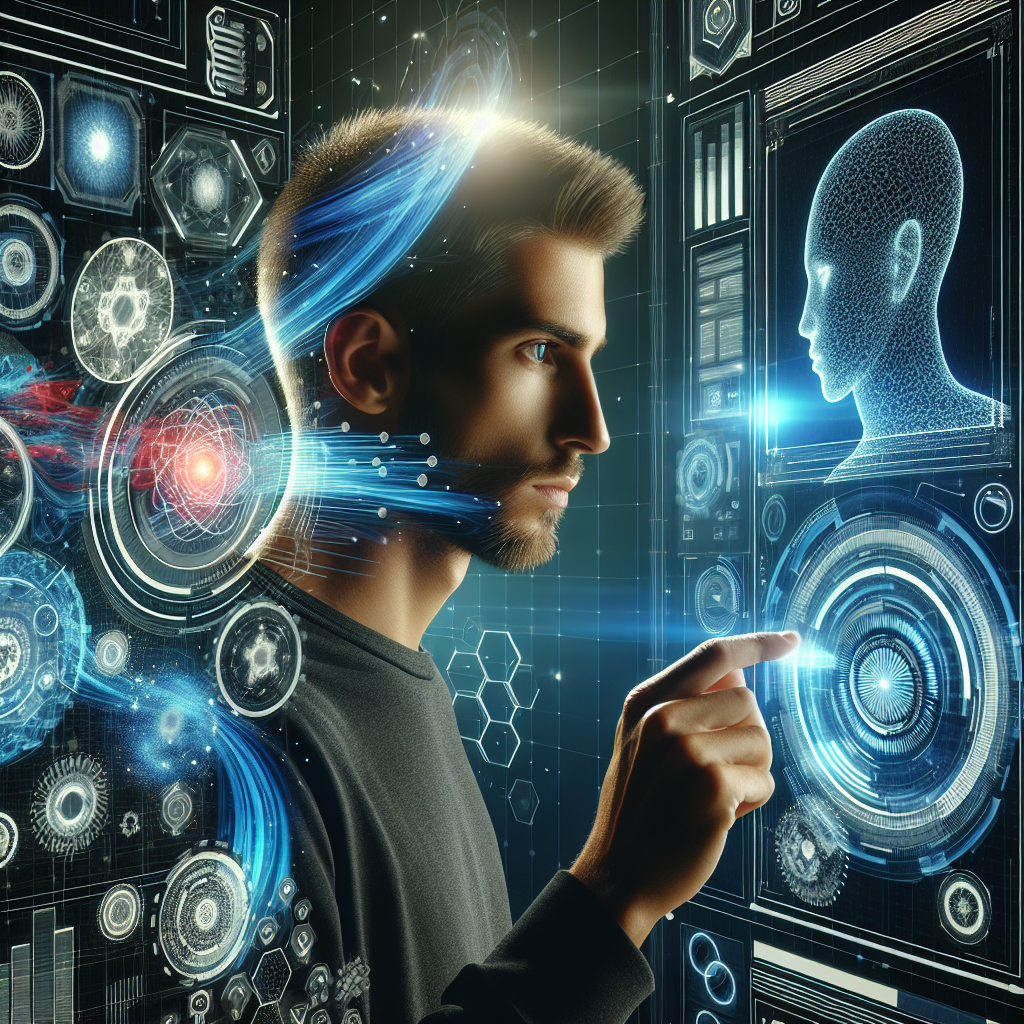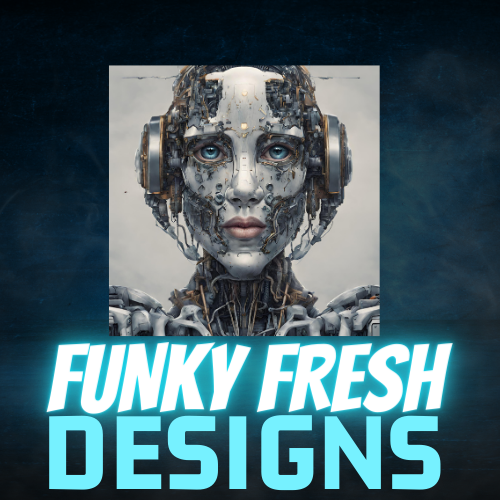Imagine a world where every aspect of your life is seamlessly designed to cater to your needs and desires. A world where technology anticipates your every whim and adjusts itself accordingly, creating a personalized experience that is intuitive and responsive. This is the power of user-centric design evolution with AI. By harnessing the capabilities of artificial intelligence, designers can now unlock the full potential of user-centered design, revolutionizing the way we interact with technology. From intuitive interfaces to personalized recommendations, AI is paving the way for a future where design adapts to us, rather than the other way around.
Understanding User-Centric Design
User-Centric Design is a design approach focused on creating products and experiences that prioritize the needs and preferences of the end users. It emphasizes empathy and understanding of the target audience, enabling designers to make informed decisions throughout the design process. By placing the user at the center of the design, User-Centric Design aims to create intuitive, engaging, and user-friendly experiences.
The Importance of User-Centric Design
User-Centric Design is essential in today’s digital landscape, where user expectations and demands are constantly evolving. By adopting this approach, businesses and designers can create products that resonate with their target audience, leading to increased user satisfaction, loyalty, and ultimately, business success. User-Centric Design also helps minimize the risk of creating products that fail to meet user needs, saving time and resources in the long run.
Introduction to AI in Design
Artificial Intelligence (AI) refers to the simulation of human intelligence in machines that can perform tasks that typically require human intelligence. In the field of design, AI has emerged as a powerful tool that can augment and enhance the design process. By leveraging the capabilities of AI, designers can leverage vast amounts of data, automate repetitive tasks, and gain valuable insights to inform their decision-making.

Overview of Artificial Intelligence
Artificial Intelligence encompasses various technologies such as machine learning, natural language processing, and computer vision. These technologies enable machines to learn from experience, understand and interpret human language, and analyze visual data. By combining these capabilities, AI systems can process large amounts of data, make predictions, and perform complex tasks that were previously exclusive to human intellect.
Application of AI in Design
AI has found its application across various design domains, including user interface (UI) and user experience (UX) design, graphic design, industrial design, and architectural design. In UI/UX design, AI can be used to generate personalized recommendations, automate prototyping, and provide real-time feedback on user interactions. In graphic design, AI can assist in generating visuals, creating logos, and optimizing design elements.
Benefits of AI in User-Centric Design
Enhanced User Experience
AI can significantly enhance the user experience by generating personalized recommendations, predicting user behavior, and adapting interfaces to individual preferences. By analyzing user data, AI can suggest relevant content, recommend products, and provide tailored experiences that resonate with each user.
Efficiency in Design Process
AI-powered tools and algorithms can automate repetitive design tasks, such as generating design iterations, resizing images, and organizing design assets. This automation saves valuable time for designers, allowing them to focus on more creative and strategic aspects of the design process.
Personalization and Customization
AI enables designers to create highly personalized and customized experiences by analyzing user data and preferences. By understanding individual preferences, AI can tailor interfaces, content, and interactions to each user, providing a unique and engaging experience.
Data-Driven Insights
AI can process vast amounts of user data, providing designers with valuable insights into user behavior, preferences, and pain points. By analyzing this data, designers can make data-driven decisions that align with user needs, leading to improved designs and better user satisfaction.

Challenges in Implementing AI in User-Centric Design
Ethical Considerations
As AI becomes increasingly integrated into design processes, it raises ethical considerations. Designers must ensure that AI systems are built with transparency, fairness, and respect for user autonomy. They must be mindful of potential biases and discriminatory outcomes that may arise from AI algorithms.
Data Privacy and Security
The use of AI in user-centric design requires the collection and analysis of user data. Designers must prioritize data privacy and security, ensuring that user information is protected and used responsibly. They should also obtain informed consent from users before collecting and utilizing their data.
Integrating AI with Human Creativity
AI should be seen as a tool to augment human creativity rather than replace it. Designers must find the right balance in integrating AI into the design process, combining the unique abilities of AI algorithms with human creativity and intuition.
Algorithm Bias and Fairness
AI algorithms are trained on historical data, which can perpetuate existing biases and inequalities. Designers must actively address algorithm bias, ensuring that AI systems deliver fair and unbiased results. This requires diverse and inclusive training data and ongoing monitoring and evaluation of AI systems.
Evolution of User-Centric Design with AI
Early Applications of AI in Design
The early applications of AI in design focused on automating repetitive tasks, such as layout design and image processing. These early AI systems were limited in their capabilities but laid the foundation for future advancements in AI-driven design.
AI-Driven User Research and Empathy
AI has revolutionized user research by enabling designers to gain deep insights into user behavior and preferences at scale. AI can analyze large datasets, uncover patterns, and provide designers with valuable insights that inform the design process. This allows designers to design products that better align with user needs and desires.
AI-Enabled Design Thinking
AI can enhance the design thinking process by providing designers with data-driven insights and ideas. By analyzing user data, AI algorithms can generate innovative design concepts, helping designers explore new possibilities and push the boundaries of creativity.
Collaborative Design with AI
AI systems can facilitate collaboration between designers and AI algorithms, enabling a co-creative process. Designers can leverage AI tools to generate design suggestions, explore different design options, and receive real-time feedback. This collaborative approach empowers designers to make informed design decisions and create more impactful and user-centric designs.
Intelligent Design Automation
AI can automate various design tasks, enabling designers to focus on higher-level design thinking. AI-powered tools can automate processes such as generating design variations, evaluating design solutions, and optimizing design parameters. This automation streamlines the design process and increases design efficiency.
Case Studies: AI-Driven User-Centric Design
Google’s Material Design
Google’s Material Design is an example of AI-driven user-centric design. Material Design uses AI algorithms to analyze user interactions and generate recommendations for UI and UX design. It leverages AI to create a cohesive and intuitive design language that enhances user experiences across different Google products.
Netflix’s Recommendation System
Netflix’s recommendation system is a prime example of AI-driven user-centric design. By analyzing user viewing habits, ratings, and feedback, Netflix’s AI algorithms generate personalized recommendations for users, helping them discover new content that aligns with their preferences. This AI-powered personalization enhances the user experience and keeps users engaged on the platform.
Amazon’s Personalized Shopping Experience
Amazon utilizes AI to deliver a personalized shopping experience to its users. By analyzing user browsing history, purchase behavior, and demographic data, Amazon’s AI algorithms generate customized product recommendations. This AI-driven personalization enhances the user experience, improves product discovery, and drives higher conversion rates.
The Future of User-Centric Design with AI
Augmented Creativity and Design Assistance
In the future, AI will continue to augment human creativity by providing designers with advanced design assistance tools. AI algorithms will be capable of generating design suggestions, exploring design alternatives, and assisting with design decision-making. This collaboration between humans and AI will further enhance the user-centric design process.
AI-Powered Prototyping and Testing
AI will play a crucial role in prototyping and testing. AI algorithms will enable designers to swiftly generate interactive prototypes, simulate user interactions, and gather feedback at an early stage. This rapid prototyping and testing process will accelerate the design iteration cycle and lead to more refined and user-focused designs.
Hyper-Personalization and Proactive Design
As AI systems become more advanced, they will be capable of delivering hyper-personalized experiences. AI algorithms will learn and adapt to individual user preferences in real-time, allowing designers to create experiences that proactively respond to user needs and desires. Hyper-personalization will elevate user-centric design to new levels, fostering deep user engagement and loyalty.
Seamless Integration of AI and Human Interaction
The future of user-centric design will witness a seamless integration of AI and human interaction. AI algorithms will become more transparent and explainable, allowing designers and users to understand the rationale behind AI-driven design decisions. This increased transparency and trust will facilitate a harmonious collaboration between AI and humans, resulting in more user-centric designs.
Ethical Implications and Guidelines for AI-Driven Design
Transparency and Explainability
Designers must prioritize transparency and explainability in AI-driven design. Users should be informed about the use of AI in the design process, understand the underlying algorithms, and have access to meaningful explanations for design decisions. Transparent and explainable AI fosters trust and enables users to make informed choices.
Bias Detection and Mitigation
Designers must actively detect and mitigate biases that may arise from AI algorithms. This involves careful evaluation of training data, diversifying training datasets, and ongoing monitoring and evaluation of AI systems. By addressing bias, designers can ensure fairness and inclusivity in user-centric design.
Preserving User Privacy and Autonomy
User-centric design must respect user privacy and autonomy. Designers should prioritize user consent and allow users to have control over their data. Usage of personal data should be limited to providing personalized experiences and must be handled securely and responsibly.
Ensuring User Consent and Control
Designers must obtain informed consent from users before implementing AI in the design process. Users should have the ability to choose whether they want AI-driven experiences, have control over the level of personalization, and the option to opt-out if desired. Respecting user consent and control is essential in user-centric design.
Collaboration Between Designers and AI
Role of Designers in AI-Driven Design
Designers play a crucial role in AI-driven design. They are responsible for setting design goals, defining ethical guidelines, and interpreting AI-generated insights. Designers possess the creative expertise and human understanding necessary to make informed decisions and ensure that AI enhances the user-centric design process.
Human-AI Interaction and Collaboration
Designers must embrace a collaborative mindset when working with AI. They should actively engage with AI-generated insights, critically evaluate AI recommendations, and consider them alongside their own creative ideas. This human-AI collaboration fosters a symbiotic relationship, where designers leverage AI to enhance their creativity, and AI algorithms learn and evolve based on human input.
Skillsets and Mindset for Designers in the AI Era
To thrive in the AI-driven design era, designers need to develop both technical and non-technical skills. This includes proficiency in AI tools, understanding of AI concepts and limitations, and a solid foundation in design principles. Designers must also cultivate a growth mindset, adaptability, and a willingness to collaborate with AI systems.
Conclusion User-Centric Design Evolution With AI
The evolution of user-centric design with AI has transformed the design landscape, revolutionizing the way designers create products and experiences. AI has empowered designers to deliver enhanced user experiences, automate repetitive tasks, and gain valuable insights from data. As AI continues to advance, designers must navigate ethical considerations, collaborate with AI, and harness its capabilities to create truly user-centric designs. By embracing the AI-driven design revolution, designers can shape the future of user-centric design and create transformative and meaningful experiences.
